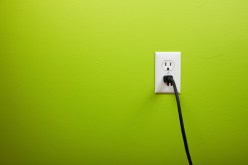Fireplace Remote Control vs Traditional Controls: Which is Right for You?
When it comes to controlling your fireplace, there are two main options: a fireplace remote control or traditional controls. Both have their advantages and drawbacks, so it’s important to understand the differences before making a decision. In this article, we will compare these two options to help you determine which one is right for you.
Convenience and Ease of Use
One of the biggest advantages of a fireplace remote control is its convenience and ease of use. With just a click of a button, you can turn your fireplace on or off, adjust the flame height, and even set a timer for automatic shut-off. This eliminates the need to manually light the fire or adjust the controls on the fireplace itself.
Traditional controls, on the other hand, require manual operation. You may need to use a match or lighter to start the fire and manually adjust knobs or levers to control the flame height. While some people enjoy this hands-on approach, others find it cumbersome and time-consuming.
Safety Features
Fireplace remote controls often come with built-in safety features that can give you peace of mind. For example, some models have child lock functions to prevent accidental activation by little ones. Others have temperature sensors that automatically shut off the fireplace if it exceeds a certain temperature.
Traditional controls typically do not have these safety features unless they are built into the fireplace itself. This means you may need to rely on your own vigilance when using traditional controls to ensure that everything is safe and secure.
Accessibility
Another factor to consider is accessibility. Fireplace remote controls are particularly beneficial for individuals with limited mobility or disabilities. They allow easy access and control from a distance without having to physically interact with the fireplace.
In contrast, traditional controls may pose challenges for those who have difficulty reaching or manipulating knobs and levers due to physical limitations.
Cost Considerations
Cost is also an important factor to consider when choosing between a fireplace remote control and traditional controls. Remote controls can range in price depending on the features and functionality they offer. Some models may require additional installation costs if they need to be integrated with your existing fireplace system.
Traditional controls, on the other hand, are generally included with the purchase of a fireplace. However, keep in mind that if you opt for traditional controls, you may miss out on the added convenience and features that come with a remote control.
In conclusion, both fireplace remote controls and traditional controls have their own advantages and drawbacks. If convenience, ease of use, safety features, and accessibility are important to you, then a fireplace remote control might be the right choice. However, if you prefer a more hands-on approach or have budget constraints, traditional controls could be a suitable option. Ultimately, it’s about finding the control method that best suits your needs and preferences for enjoying your fireplace experience.
This text was generated using a large language model, and select text has been reviewed and moderated for purposes such as readability.





